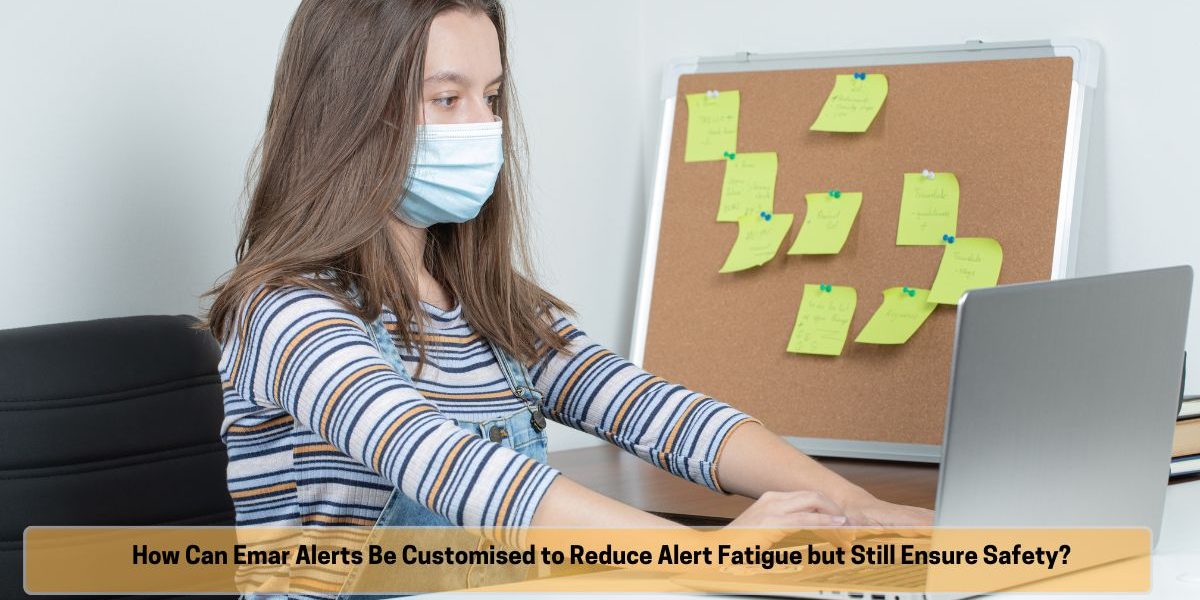In the UK care home sector, patient safety remains the foremost priority. As technology becomes more integrated into care delivery, electronic medication administration records (eMARs) have proven essential in supporting safe and accurate medication management. These systems generate alerts that notify staff of potential medication issues, helping prevent harmful errors and promoting compliance. However, excessive or poorly targeted alerts can lead to alert fatigue—a state where staff become desensitised to frequent warnings and begin to overlook or dismiss them.
For care home managers, this presents a pressing challenge: how to customise and manage eMAR alerts to reduce fatigue while preserving the safety benefits the system provides. Over-alerting can frustrate staff, slow down workflow, and ultimately put residents at risk. On the other hand, silencing important alerts risks allowing medication errors to go unnoticed. Finding the right balance is key.
Here, we explore practical strategies care home managers can implement to customise electronic MAR system alerts for their teams.
1. Prioritise Alerts Based on Severity
Not all medication-related issues carry the same level of risk. A key step in reducing alert fatigue is ensuring that alerts reflect this. Managers should work with system providers to configure eMARs so that critical alerts—such as those relating to life-threatening drug interactions or major dosage errors—are clearly distinguished from lower-priority notifications.
For example, alerts involving a combination of medications that could cause dangerous side effects should appear as high-priority pop-ups requiring immediate attention. In contrast, a reminder to administer a non-essential supplement an hour late may be better displayed in a less obtrusive format.
By setting clear alert priorities, care home staff can focus their attention on the most important issues without being overwhelmed by minor warnings. This reduces cognitive overload and helps ensure that serious risks receive the prompt response they demand.
2. Tailor Alert Thresholds to Resident Needs
Residents in care homes often have complex and varying healthcare needs. A one-size-fits-all approach to alerts may generate excessive notifications that lack relevance to individual circumstances. Care home managers should consider adjusting alert thresholds based on residents’ specific conditions.
For example, in a unit that cares for residents with advanced dementia, tighter control over sedative dosages might warrant more sensitive alerts. This targeted approach ensures alerts are meaningful and relevant to the clinical context.
3. Streamline Alerts and Eliminate Redundancy
If the electronic medication administration record software keeps flagging the same issue—like a mild interaction already reviewed by the GP—staff may start ignoring all alerts, risking missed serious warnings.
Managers can address this by working with IT teams to merge related alerts into one clear, actionable message.
Also, avoid duplicate alerts for resolved issues—staff shouldn’t be reminded about low stock once a resupply is requested.
4. Engage Clinicians in Alert Configuration
Frontline staff interact with eMAR alerts every day, so their input is invaluable in shaping how the system functions. Care home managers should involve nurses, care assistants, and pharmacists in decisions about alert design and customisation.
Clinicians can help identify which alerts are genuinely useful and which are viewed as “spam”. Their insights can inform decisions on formatting, frequency, and timing. For instance, some staff may prefer alerts to be displayed at the beginning of a shift or medication round, rather than continuously throughout the day.
eMAR systems should not be treated as static. As care practices evolve, resident profiles change, or regulations are updated, alert settings may need to be revised. Care home managers should schedule regular reviews of alert activity and outcomes.
This may include examining logs to determine which alerts are frequently overridden, missed, or ignored. Feedback from staff should also play a role in evaluating system effectiveness. Use this information to fine-tune thresholds, eliminate outdated alerts, and introduce new rules that reflect current risks.
A proactive approach to system maintenance ensures the eMAR remains a valuable clinical tool, rather than becoming a source of frustration or complacency.







